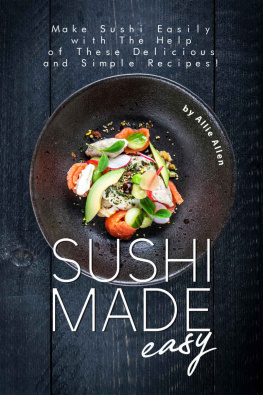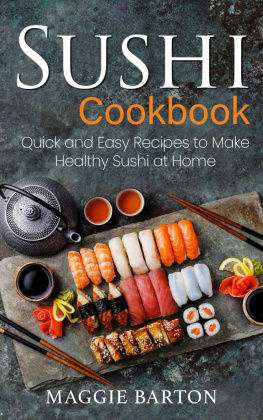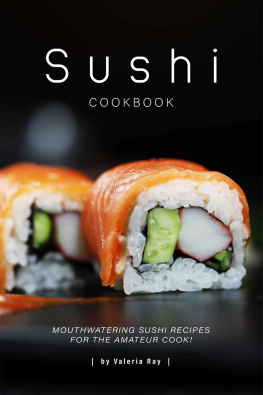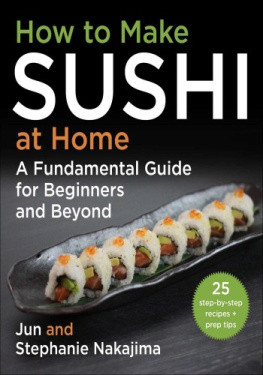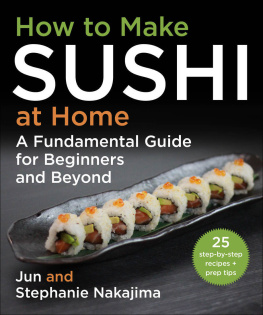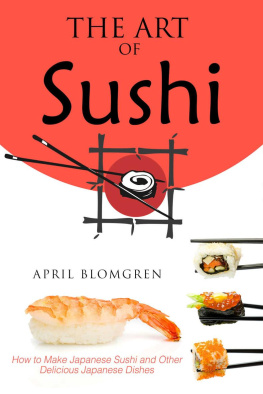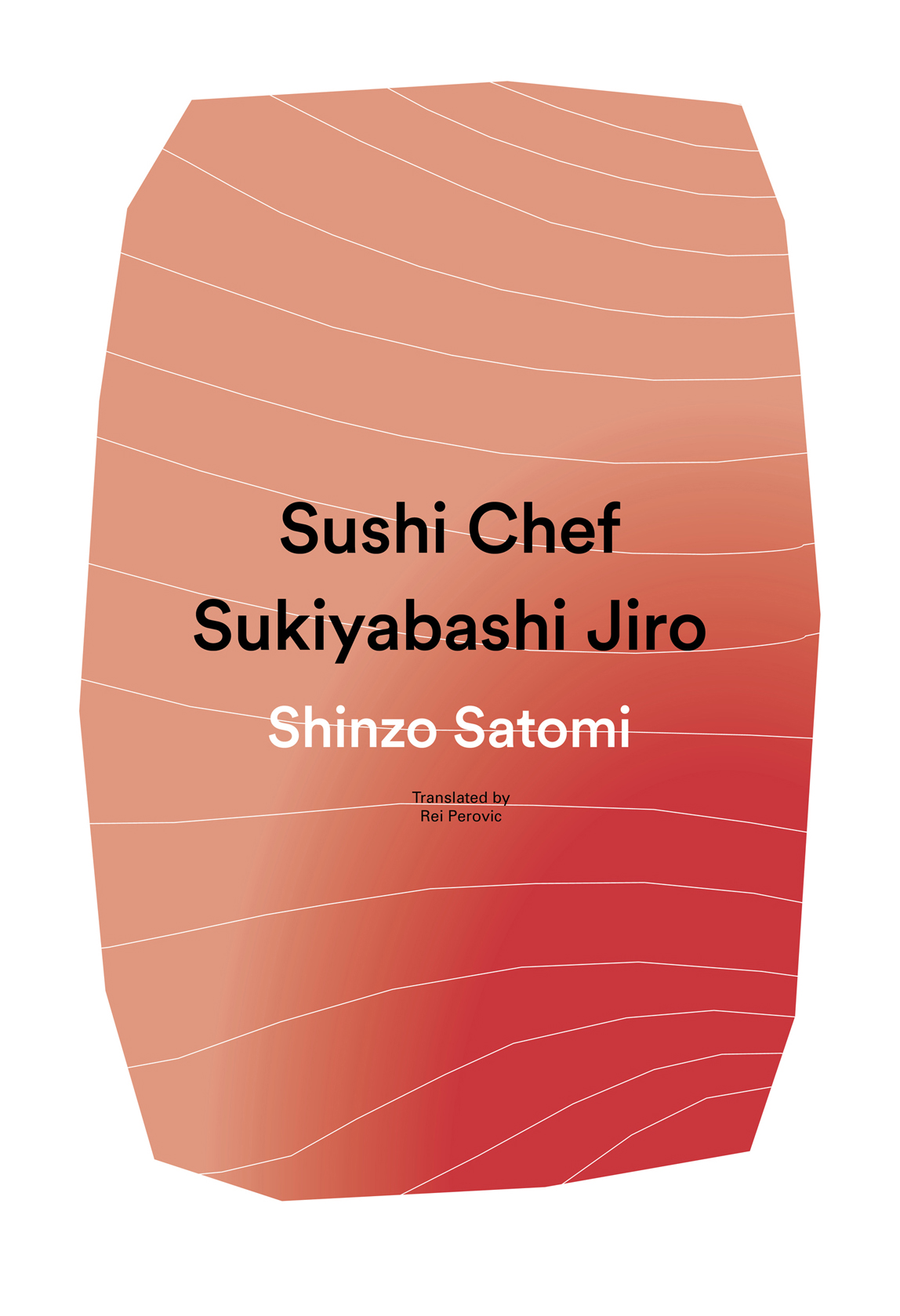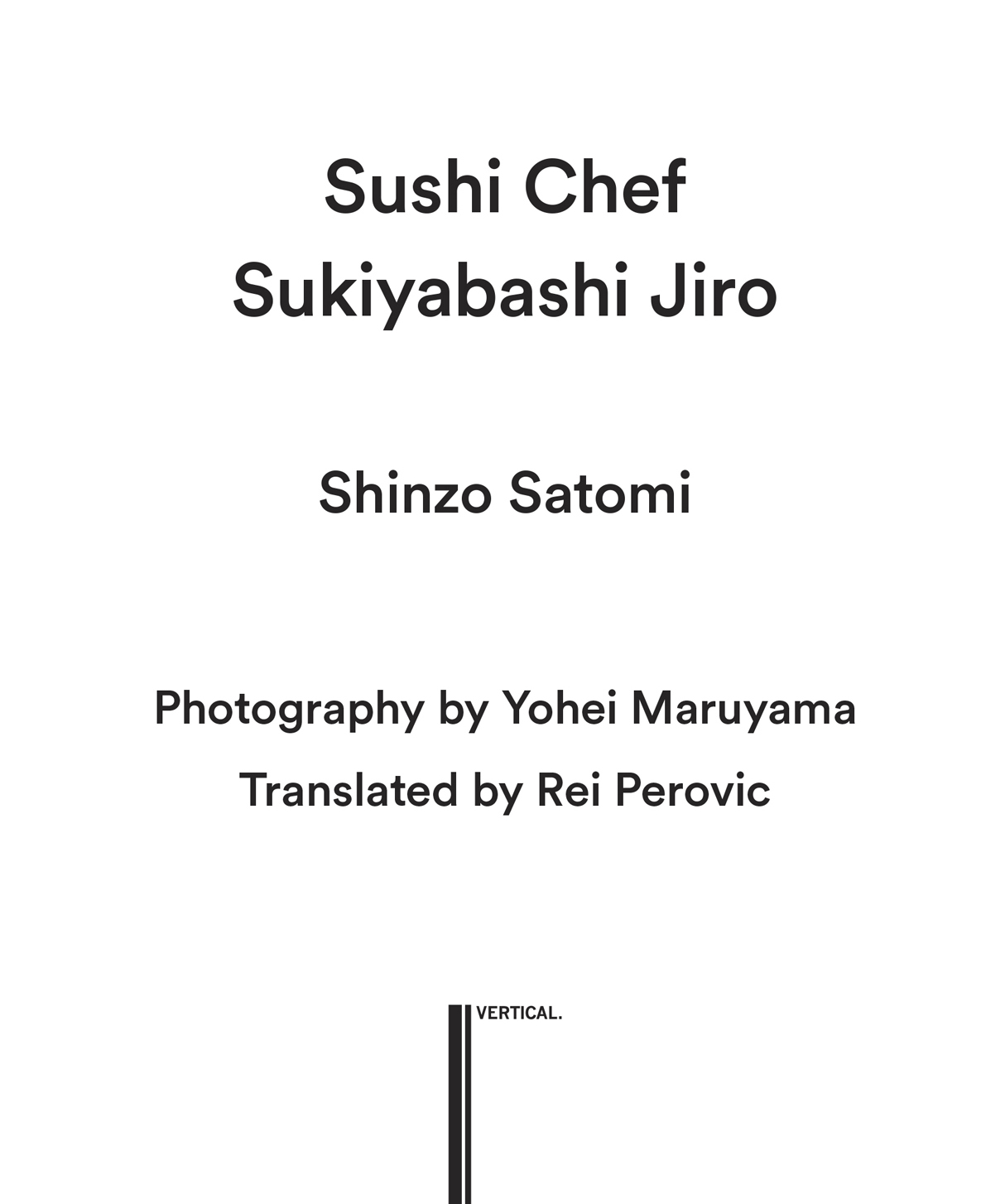Sushi Chef Sukiyabashi Jiro
Production: Risa Cho
SUKIYABASHI JIRO SHUN WO NIGIRU by SATOMI Shinzo
Copyright 1997 by NAITO Shizue
All rights reserved.
Original Japanese edition published by Bungeishunju Ltd., Japan English translation rights reserved by Vertical, Inc., U.S.A., under the license granted by NAITO Shizue, Japan arranged with Bungeishunju Ltd., Japan
Published by Vertical, Inc., New York, 2016
e-ISBN: 978-1-942993-28-5
First Edition
Vertical, Inc.
451 Park Avenue South, 7th Floor
New York, NY 10016
www.vertical-inc.com
v3.1
Table of Contents
PREFACE
INVITATION TO JIRO ONOS WORLD
This book is the ultimate Edomae (Tokyo Bay)-style Nigiri Sushi Technical Manual, and without omission includes all of the nigiri, sake sides, and small dishes served over the course of the year by the number-one sushi craftsman of the present day, Jiro Ono.
When you peek into a plain wood tane box thats unique to the Sukiyabashi Jiro establishment, its clear which seafood is in season in the oceans around Japan. The king of whitefish in the cold season is hirame (flounder), while fukko (young Japanese sea bass) and mako garei (marbled sole) reign in summer. Octopus tentacles become flavorful in winter, awabi (abalone) is in season in the Kanto area in summer. Shako (mantis shrimp) can be found in the market all year round, but they taste the best when theyre in the spawning phase in the springtime. In short, this book is highly useful as a glossary of seasonal seafood.
Moreover, he didnt simply demonstrate his brilliant and delicate technique. He also exhaustively disclosed the secrets to the flavors of his renowned restaurant.
Hon maguro (bluefin tuna) marinated in soy sauce. Pickled kohada (gizzard shad). Steamed awabi (abalone). Simmered anago (conger eel). Boiled tako (octopus). Boiled kuruma ebi (prawn). Marinated hamaguri (hard clam). Marinated shako (mantis shrimp). Minced shiba ebi (shiba shrimp). Tamagoyaki (Japanese omelette). Furthermore, how to cook vinegared rice. To smoke katsuo (bonito). A tip to keeping the freshness of katsuo until nighttime. A reasonable thawing method for ikura (salmon roe). Selection techniques for kanpyo (dried gourd). The way to toast nori (dried seaweed) and the seasoning of gari (pickled ginger). Needless to say, these are secret formulae that have never been taken out of the sushi restaurants. Here lies the reason we call it the ultimate.
The nigiri that Jiro Ono makes is noble and beautiful. Kohadas liveliness, expressed by twisting the tip of the tail a tad to the left. Steamed awabi (abalone) ever so soft that hugs the vinegared rice marvelously. Iwashi (sardine) that shows the freshness of the catch through the dark flesh. Aromatic hatsu gatsuo (the first bonito of the season) smoked with straw fire. The appetite-stimulating refined fat of marbled kinkai hon maguro (bluefin tuna from the seas around Japan) and bellows belly of otoro (fatty tuna). Brilliantly colored and aromatic nori maki (vinegared rice rolled in seaweed) with its nori toasted with Kishu bincho charcoal every morning. Readers are in for a visual feast every time they turn a page.
Take maguro (tuna) for example. When you look at the pictures of the whole fish cut in round slices, you can clearly see the exact locations of lean meat, the chutoro (medium-fatty tuna), the bellows belly of otoro (fatty tuna), and marbling at a glance. I pat myself on the back that this book is a valuable record thats very useful for sushi craftsmen and enthusiasts, not to mention market participants. To cut an expensive kinkai hon maguro into round slices is unprecedented.
In the beginning, I wrote, the number-one sushi craftsman of the present day, Jiro Ono. This statement is certainly not an exaggeration. He not only possesses the outstanding sense of smell, sense of taste, and taste-bud memory required to be a first-class chef, but is also an extraordinarily tenacious perfectionist and obsessive.
Ono works relentlessly to improve the flavors. And the nigiri he makes evolves on a daily basis. For instance, he used to boil kuruma ebi (prawn) twice a day, in the morning and at night, but now he cooks it right after taking the order and makes lukewarm nigiri. And he now sticks to only the wild ones from Tokyo Bay. He knows from trial and error that kuruma ebis natural flavor is exerted at its aromatic best at body temperature. And after boiling, the red and white of the wild prawn from Tokyo Bay is the most beautiful compared to other places. Its not just kuruma ebi. Every technique performed on each tane (topping) advances rapidly. Therefore, each time I visit, I discover a new heavenly body that is bliss in my mouth.
Where does his persistent spirit of inquiry come from?
When young Ono was a cook in Hamamatsu, he aspired to be a sushi chef and at the age of twenty-six, in spring, entered an apprenticeship at the prestigious Edomae-style nigiri restaurant Yoshino (in Kyobashi, Tokyo). It was a late restart. He diligently learned by observing and imitating the techniques of his predecessor at Yoshino, Suekichi Yoshino (deceased), who was famed as a maestro. The way Ono toasts nori and creates the flavor of anago originated from what he learned back then and developed according to his own style. Three years later, Jiro was ordered to go to Osaka to head a restaurant for hire, and there, he encountered authentic tako (octopus) from Akashi. Ono started to display his perfectionism after he returned to Tokyo at the age of thirty-three. Using the local octopus of Kanto, he attempted through trial and error to recreate the flavor and aroma of octopus from Akashi. And at last, he determined that the natural octopus flavor is exerted at its aromatic best at body temperature and that for the accompanying flavor, it is better to use coarse salt instead of the traditional sweet and salty Edomae-style nitsume (reduction sauce).
I dont make nigiri with tai (sea bream)
Expensive and rare hoshi garei (starry flounder) is not the king of whitefish
Its out of pride as a sushi craftsman that I disregard profit and make shinko (young gizzard shad) nigiri
Without vinegared rice at body temperature, you cant make tasty nigiri
There is no particular order to eat nigiri
Immediately after I make the nigiri, put it in your mouth
Reading the Jiro Sushi Talk in this book feels like listening to a maestro talk about his art.
Its been a half-century since a young man with great ambitions came to the Eastern capital during the chaotic era of the ruin-of-fire black market. Jiro Ono, who was born in 1925, managed to establish a famous Edomae-style nigiri sushi restaurant in his lifetime. To this day, he, long past the age of seventy, still stands in his kitchen and makes nigiri. And he continues to watch over how much vinegar his young apprentices use for kohada and the seasoning condition of the vinegared rice. His painstaking pursuit to improve his sushi


